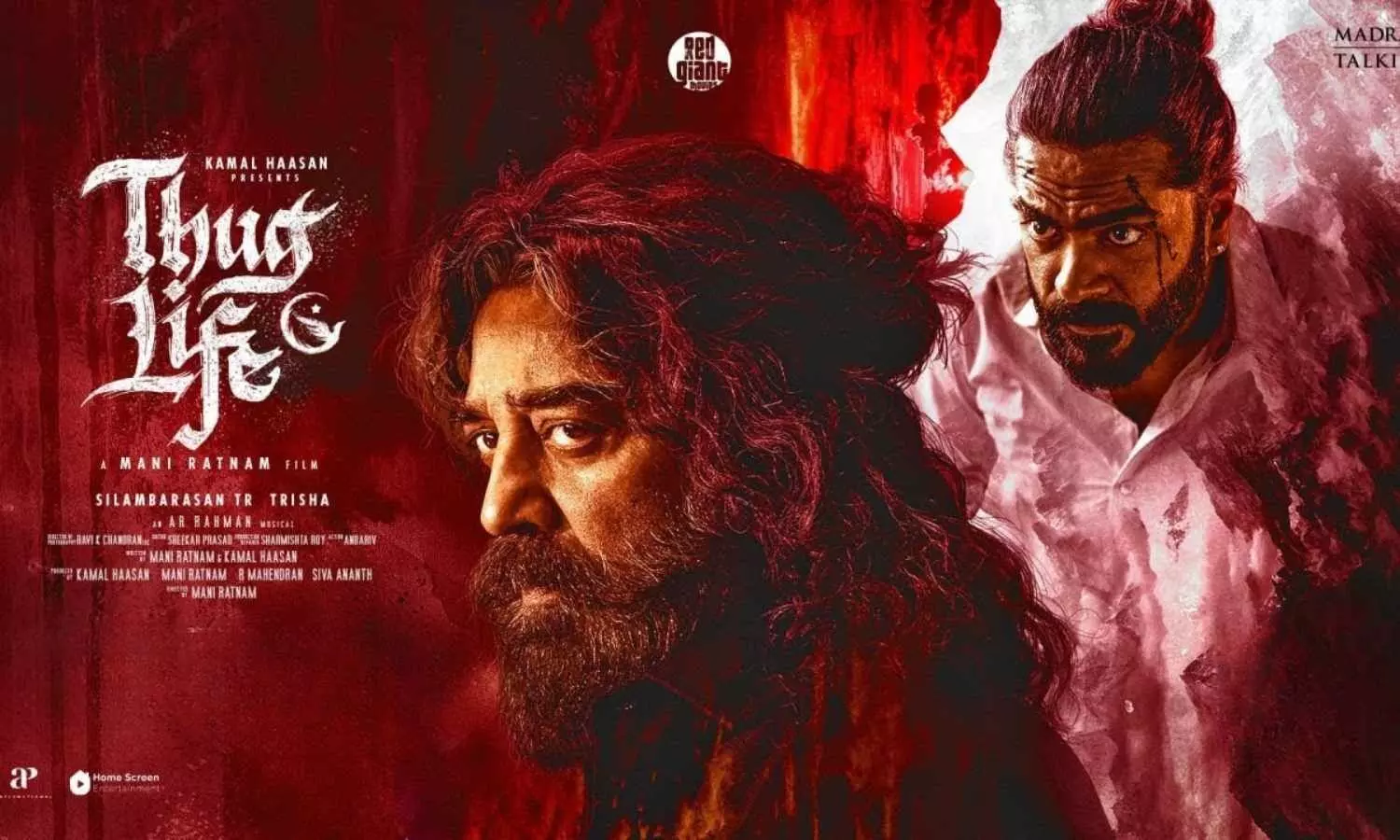Thug Life Movie Review: Kamal Haasan & Mani Ratnam’s Epic Falls Short of Expectations
Read the full review of Thug Life, starring Kamal Haasan and directed by Mani Ratnam. Despite grand ambitions and star power, the film struggles with pacing and coherence, turning into a cinematic endurance test.
Thug Life Movie Review: Kamal Haasan & Mani Ratnam’s Epic Falls Short of Expectations

The line, “You either die a hero or live long enough to see yourself become the villain,” famously delivered by Harvey Dent in The Dark Knight, perfectly sums up the core conflict of Thug Life. Unfortunately, this film, directed by Mani Ratnam and starring Kamal Haasan, fails to live up to expectations, emerging as one of Ratnam’s weakest works to date. While the movie showcases some striking visuals and a few well-executed long shots, it ultimately feels like an overambitious gangster drama that’s weighed down by lackluster storytelling and shallow character development.
The film opens with a visually rich sequence introducing Rangaraya Sakthivel (Kamal Haasan) and his lifelong entanglement with death, beginning from his birth. The story then shifts to a 1994 flashback in Old Delhi, where Sakthivel is a rising gangster set on toppling his mentor, Sadanand (Mahesh Manjrekar). After a betrayal leads to a shootout with the police, Sakthivel finds an orphaned boy, Amaran, amid the chaos and takes him under his wing.
Fast forward to 2016, Sakthivel remains a powerful figure in the underworld, with Amaran (Silambarasan) as his trusted lieutenant. When Sakthivel is imprisoned for murder, he entrusts Amaran with his empire and the safety of his family. But power struggles emerge within the gang, leading to betrayals and deadly plots. As alliances shift, the story becomes a classic “game of thrones” for control — a concept with rich potential that the film sadly fails to fully realize.
Despite its ambitious premise, Thug Life is burdened by weak writing and a convoluted screenplay that leads to numerous underdeveloped scenes. The characters, though numerous, fail to leave a lasting impression. Sakthivel, introduced as a ruthless gangster with a humane side, is never fleshed out enough for the audience to emotionally connect with him. Similarly, Amaran’s character arc is inconsistent, riddled with plot holes and a lack of meaningful emotional depth.
Unlike Mani Ratnam’s earlier gangster classic Nayakan, where the lead character’s solitary journey was compelling, Thug Life focuses on family and gang relationships but doesn’t succeed in exploring them convincingly. Attempts to add emotional weight through long, heavy dialogues only highlight the subpar writing and fail to build believable bonds, particularly between Sakthivel and Amaran. Their eventual conflict, which should have been powerful, comes off as flat and uninspired.
The film also suffers from clichéd and outdated tropes, like the predictable “hero falling off a cliff” sequence that feels out of place in a story about savvy gangsters. Additionally, romantic subplots, such as Sakthivel’s relationships with his wife Jeeva (Abhirami) and mistress Indrani (Trisha Krishnan), lack substance and emotional resonance, reduced mostly to superficial interactions and poorly handled scenes.
Female characters, in general, are sidelined with little importance beyond their relation to male characters, which is disappointing in a modern cinematic landscape. The subplot involving Amaran and Indrani, for example, is awkwardly presented and leaves viewers confused about its significance.
Kamal Haasan’s performance, while charismatic, sometimes feels disconnected from the tone of the film, creating a noticeable divide between him and the rest of the cast, who generally maintain consistency in their roles. Silambarasan, in particular, struggles with a weak introduction and lack of impactful scenes.
On the technical side, the film is a mixed bag. Cinematographer Ravi K. Chandran delivers stunning visuals that effectively capture the gritty atmosphere and essence of the story’s setting. Editor Sreekar Prasad’s work helps to some extent but cannot fully save the film from its sluggish pace and disjointed storytelling. The music by A.R. Rahman is surprisingly disappointing, with an often jarring background score that distracts rather than enhances. While the track “Vinveli Nayaga” is well composed, its scattered placement detracts from the overall experience. Action sequences, choreographed by Anbariv, also fail to impress and add to the film’s unevenness.
In summary, Thug Life feels like an extended Kamal Haasan monologue with long-winded scenes that drag without delivering meaningful content. Despite the collaboration of some of cinema’s greats, the film never quite finds its footing, leaving viewers with a visually impressive but narratively exhausting gangster drama.

